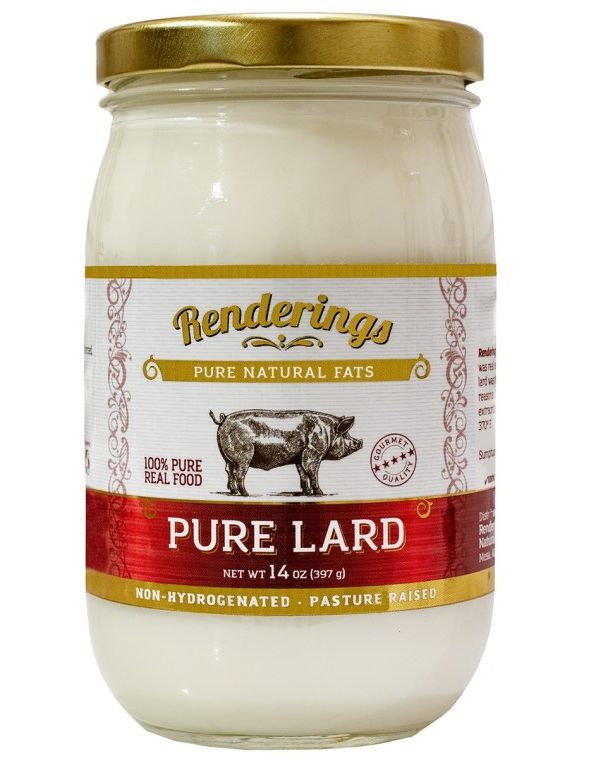
I am 70. During just my lifetime, there have been many changes in viewpoint as to what it is healthful to eat. Among the changes were controversies concerning
- Butter
- Chocolate
- Eggs
- Organ meats
- Lard
The first three foods have regained acceptance, at least to a degree.
The fourth item, organ meats, includes livers, kidneys, sweet breads, and hearts. As a result, how many of us today include kidneys or ‘sweet breads’ in our menu?
Once removed from the dinner table, children are not exposed to such foods, so they are reluctant to try them later.
But What About Lard?
Just as butter was largely replaced by a manufactured product, margarine, lard was replaced by products such as Cottolene¹, a mixture of cottonseed oil and beef tallow. What was the basis for lard’s loss of favor?
It was maligned with shouts of “Cholesterol! Saturated fat!” However, saturated fat is no longer considered Public Enemy No. 1. The new culprit is trans fat (see image).

Trans fat is introduced through hydrogenation. Vegetable oils are partially hydrogenated to increase melting point, yielding a solid product. Do you recalling reading food labels that include the words partially hydrogenated vegetable oil(s)?
But what about the problem of cholesterol? Eaten in moderation, the bodies of healthy people handle it. The problem is, our bodies manufacture their own cholesterol. The bodies of some may are more at risk if their diets include significant levels of cholesterol. Is this cause for all to abandon the use of lard?
Just How Bad is Lard, Then?
Wikipedia says, “However, despite its reputation, lard has less saturated fat, more unsaturated fat and less cholesterol than an equal amount of butter by weight.” (Ockerman, Herbert W. (1991). Source book for food scientists (Second Edition). Westport, CN: AVI Publishing Company).
Enjoy the following video, entitled How to Render Leaf Fat Lard, which is very informative and can enable you to make a very fine product for your kitchen:
Yet There IS a Problem
When I was young, my parents would buy a pig that had been cut up and packaged by a local butcher. With it, we would receive a sizable tin of lard. The lard in that tin was partially solid, partially liquid. We used it in cooking, not so much as part of any given recipe, but for frying.
Today, it is not unusual to purchase lard at the local grocer’s. That is where the problem may come in. As is discussed in NPR’s article on lard, today’s store-bought lard is often hydrogenated. The result is not only is the natural cholesterol and saturated fat still there, but additional saturated fat, including trans-fat has been produced.
The Take Home
The take home is this: non-hydrogenated lard, used in moderation by healthy persons is not the risk people once believed it to be. Used judiciously, it can be safely added to the list of suitable kitchen ingredients. Personally, I would love to sink my fork into some homemade, lard-crust apple pie, with vanilla ice cream on top.
¹ Advertisements for Cottolene were inflammatory rhetoric that were surprisingly successful in making lard look like evil incarnate. Below is just one example, the caption below a single panel illustration:
The Cook
Why is this Cook so angry? She has given notice to leave.
Is she not a competent Cook?
She is Experienced and Capable, but she is an old Fogy, and she will not use Cottolene for Shortening.
Oh, how foolish!
She has made all the Family Ill with her Greasy Griddle Cakes, her Soggy Biscuit, her Lard-Soaked Doughnuts, and her Tough Pastry, and now they say she has Got to Go!
Why will she not use Good, Pure, Nutritious Cottolene?
Because “The Way of the Transgressor is Lard.”
Note: You might also enjoy Is Eating Beef Liver Bad for You? Or is That an Old Scientist’s tale?
References: ← Back to Food and Health
← Home
